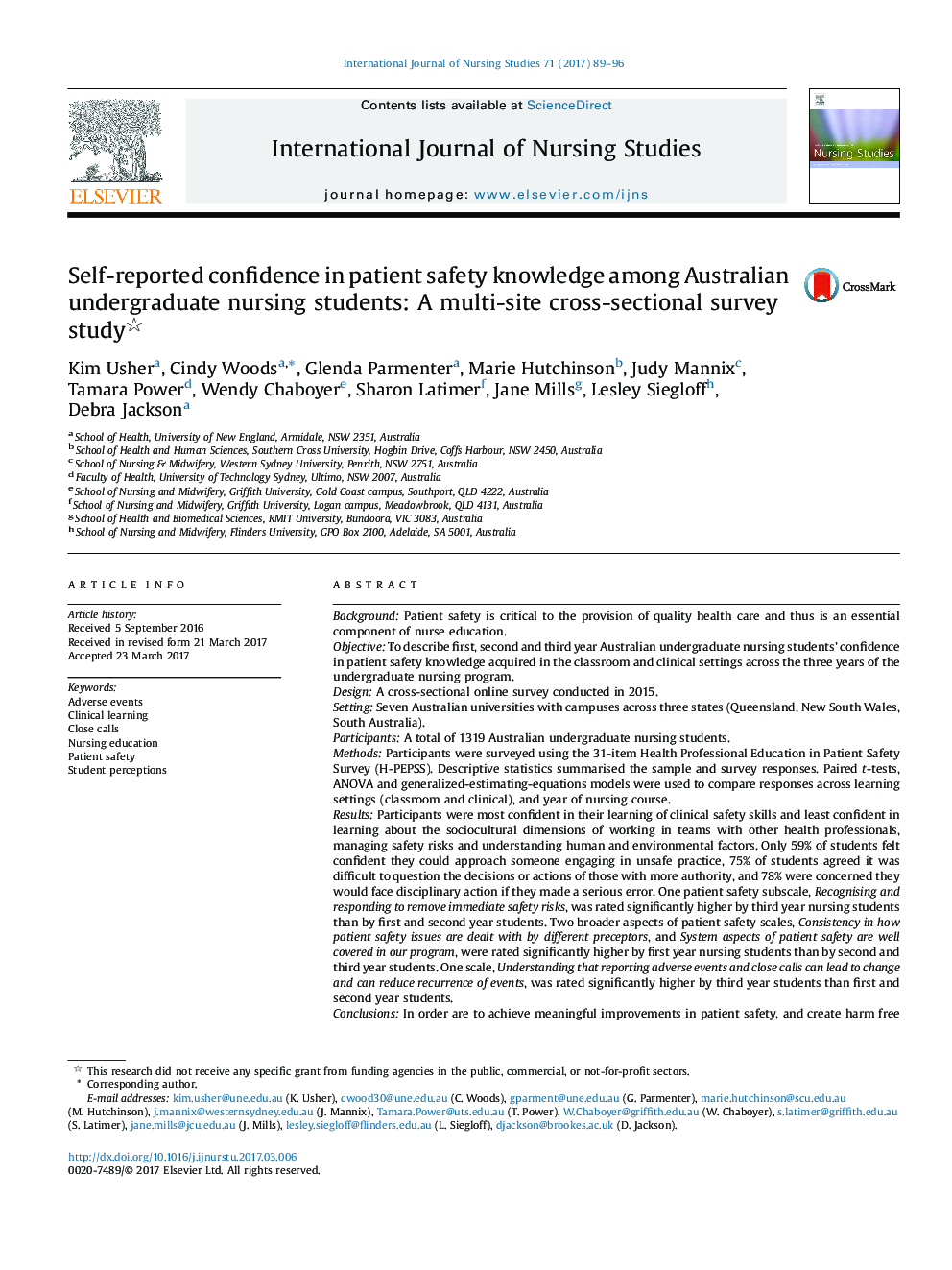| Article ID | Journal | Published Year | Pages | File Type |
|---|---|---|---|---|
| 5121106 | International Journal of Nursing Studies | 2017 | 8 Pages |
BackgroundPatient safety is critical to the provision of quality health care and thus is an essential component of nurse education.ObjectiveTo describe first, second and third year Australian undergraduate nursing students' confidence in patient safety knowledge acquired in the classroom and clinical settings across the three years of the undergraduate nursing program.DesignA cross-sectional online survey conducted in 2015.SettingSeven Australian universities with campuses across three states (Queensland, New South Wales, South Australia).ParticipantsA total of 1319 Australian undergraduate nursing students.MethodsParticipants were surveyed using the 31-item Health Professional Education in Patient Safety Survey (H-PEPSS). Descriptive statistics summarised the sample and survey responses. Paired t-tests, ANOVA and generalized-estimating-equations models were used to compare responses across learning settings (classroom and clinical), and year of nursing course.ResultsParticipants were most confident in their learning of clinical safety skills and least confident in learning about the sociocultural dimensions of working in teams with other health professionals, managing safety risks and understanding human and environmental factors. Only 59% of students felt confident they could approach someone engaging in unsafe practice, 75% of students agreed it was difficult to question the decisions or actions of those with more authority, and 78% were concerned they would face disciplinary action if they made a serious error. One patient safety subscale, Recognising and responding to remove immediate safety risks, was rated significantly higher by third year nursing students than by first and second year students. Two broader aspects of patient safety scales, Consistency in how patient safety issues are dealt with by different preceptors, and System aspects of patient safety are well covered in our program, were rated significantly higher by first year nursing students than by second and third year students. One scale, Understanding that reporting adverse events and close calls can lead to change and can reduce recurrence of events, was rated significantly higher by third year students than first and second year students.ConclusionsIn order are to achieve meaningful improvements in patient safety, and create harm free environments for patients, it is crucial that nursing students develop confidence communicating with others to improve patient safety, particularly in the areas of challenging poor practice, and recognising, responding to and disclosing adverse events, including errors and near misses.
